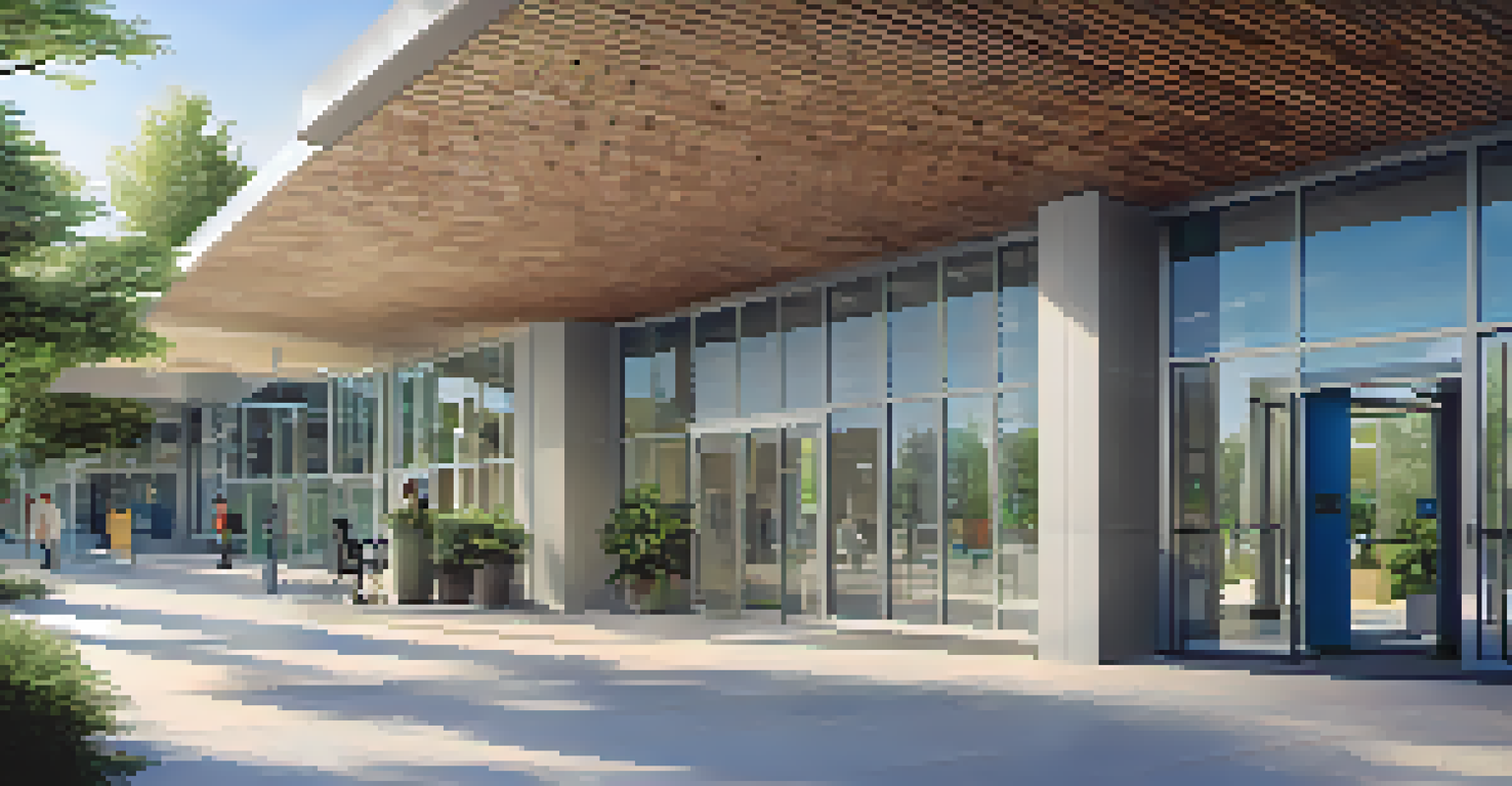The Importance of Accessibility in Colorado Health Centers

Understanding Accessibility in Healthcare Settings
Accessibility in healthcare refers to the ease with which individuals can obtain necessary health services. This includes physical access to facilities, as well as the availability of services for people with diverse needs, such as those with disabilities. In Colorado, where the population is diverse, ensuring accessibility is not just a legal obligation but also a moral imperative.
Accessibility is not a privilege, it is a right.
Imagine trying to enter a health center that has no ramps or elevators when you're in a wheelchair—frustrating, right? This is why understanding what accessibility means is crucial. It's about creating an environment where everyone can receive care without barriers, enhancing the overall patient experience.
Moreover, accessibility goes beyond just physical barriers. It encompasses communication, such as providing information in multiple languages or formats. This holistic approach ensures that all individuals, regardless of their background or abilities, feel welcome and can access the care they need.
The Legal Framework Supporting Accessibility
In the United States, several laws support accessibility in healthcare, including the Americans with Disabilities Act (ADA) and Section 504 of the Rehabilitation Act. These laws are designed to prevent discrimination against individuals with disabilities and ensure they have equal access to services. Colorado has also enacted its own statutes that reinforce these federal guidelines.

These legal frameworks establish a baseline for what accessibility should look like in health centers. For instance, they require facilities to provide accessible entrances, restrooms, and signage. Understanding these regulations helps health centers stay compliant while also fostering a culture of inclusivity.
Accessibility Enhances Patient Care
Prioritizing accessibility in healthcare allows patients to easily access services, leading to improved health outcomes and a sense of belonging.
Failure to comply with these laws can lead not only to legal repercussions but also to a loss of trust within the community. Health centers that prioritize accessibility demonstrate their commitment to serving all individuals, making them a trusted resource in Colorado.
Benefits of Accessibility for Patients
When health centers prioritize accessibility, the benefits extend far beyond compliance. Patients who can access services easily are more likely to seek care, leading to better health outcomes. For instance, individuals with disabilities often face higher rates of chronic conditions; ensuring they can visit health centers can significantly improve their quality of life.
The greatest disability is not a physical one; it's the inability to understand and adapt to the needs of others.
Moreover, accessible health centers foster a sense of belonging among patients. When people feel welcomed and accommodated, they are more likely to engage with their healthcare providers, ask questions, and adhere to treatment plans. This engagement is vital for achieving better health outcomes.
Additionally, accessible health centers can attract a broader patient base. By catering to the needs of all individuals, including those with disabilities, health centers can enhance their reputation and even expand their services to meet community demands.
Creating a Culture of Inclusivity
Inclusivity in health centers goes beyond physical modifications; it requires a cultural shift. Staff training is essential to ensure all employees understand the importance of accessibility and how to provide support to patients with varying needs. This training can lead to a more empathetic and effective healthcare environment.
For example, staff should be trained to recognize and assist individuals with hearing impairments or cognitive disabilities. By equipping employees with this knowledge, health centers can create an atmosphere where everyone feels understood and valued.
Legal Framework Ensures Compliance
Federal and state laws, like the ADA, provide a legal foundation that health centers must follow to create inclusive environments for all patients.
Moreover, fostering inclusivity encourages feedback from patients. When health centers actively seek input from individuals with disabilities, they can identify areas for improvement and better serve their communities. This continuous improvement mindset is key to maintaining high standards of care.
Innovative Technologies Enhancing Accessibility
Technology plays a significant role in enhancing accessibility in healthcare. Telehealth services, for instance, have revolutionized how patients access care, especially for individuals who may have difficulty traveling to a facility. In Colorado, this technology has become a game-changer, particularly in rural areas.
Additionally, health centers are using software that helps manage patient appointments, making it easier for individuals to schedule visits that suit their needs. Features like automated reminders and online chat support can significantly enhance the patient experience, ensuring no one feels left out.
Furthermore, assistive technologies, such as hearing aids and speech-to-text applications, are becoming increasingly integrated into health center services. By embracing these innovations, health centers can provide tailored care that meets the diverse needs of their patient populations.
Community Engagement and Collaboration
Community engagement is essential for understanding the specific accessibility needs of different populations. Health centers in Colorado can benefit from collaborating with local organizations that advocate for individuals with disabilities. This partnership can help identify gaps in services and develop strategies to address them.
For example, holding community forums can provide valuable insights into the experiences of patients with disabilities. This feedback can inform policy changes and service enhancements, ensuring that health centers remain responsive to community needs.
Community Engagement is Crucial
Collaborating with local organizations helps health centers identify and address the specific accessibility needs of their communities.
Moreover, these collaborations can lead to resource sharing, such as training programs or accessibility audits. By working together, health centers and community organizations can create a more inclusive healthcare landscape that serves everyone effectively.
Measuring Success in Accessibility Initiatives
To ensure that accessibility initiatives are effective, health centers must establish clear metrics for success. This could involve tracking patient satisfaction scores, monitoring appointment adherence rates, or conducting regular accessibility audits. These metrics can provide valuable insights into how well a health center is meeting its accessibility goals.
For example, if patient satisfaction scores decline after implementing new accessibility measures, it may signal a need for further adjustments. Regular assessments help health centers stay proactive rather than reactive, ensuring that they continually improve their services.

Additionally, sharing success stories can motivate other health centers to adopt similar practices. By showcasing the positive impact of accessibility initiatives, Colorado health centers can lead by example and contribute to a culture of inclusivity across the state.